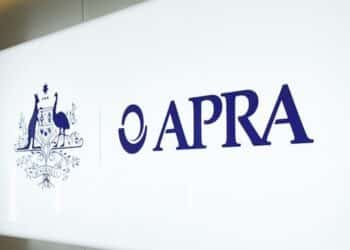In her recent appearance before the Senate economics references committee, Michelle Huckel, policy manager of the Stockbrokers and Investment Advisers Association (SIAA), said the Australian Securities and Investments Commission (ASIC) industry funding model, while intended to fund ASIC’s regulatory efforts, has raised concerns among financial advisers, particularly those providing personal advice to retail clients.
Since the introduction of the model, ASIC’s enforcement costs have seen a significant rise, surging from $68 million in 2017–18 to an estimated $111 million for 2022–23. Of this, $55.523 million is expected to be recovered from the personal financial advice subsector, making it one of the highest levies among the 53 subsectors.
Despite the government having introduced regulation that has provided evidence of improved professional standards and low levels of complaints, Ms Huckel argued that the increased enforcement cost would suggest a heightened workload for ASIC.
In effect, she noted, ASIC’s view that the regulation introduced by government is not working, runs counter to the government’s point of view that it is.
“With a full industry funding model, there is no incentive for the government or ASIC to reduce costs and pursue efficiency measures,” said Ms Huckel.
“We recommend that the government reconsiders its approach to 100 per cent industry funding and contributes a portion of the costs of ASIC’s operations,” she stated.
A co-funding model, Ms Huckel argued, would “at least” provide some “meaningful mechanism” for applying cost control over ASIC’s budget process. This, she added, would “hopefully” bring “equity and stability” back into the way ASIC’s enforcement costs are paid.
“Certainly, strong independent oversight and more transparency of ASIC resource allocation is needed,” she said.
“ASIC’s enforcement action does not just benefit ASIC’s regulated population but the economy as a whole. Yet the current ASIC funding model will be a contributing factor to making access to personal advice more difficult for retail clients at a time when more clients than ever need access to such advice.”
In its latest Cost Recovery Implementation Statement (CRIS), published in June, ASIC confirmed that to cover the cost of regulating licensees that provide personal advice to retail clients, advisers will pay a minimum levy of $1,500 plus $3,217 per adviser.
Under the former government’s ASIC levy freeze, the costs charged to the sector amounted to $22.8 million. This meant that at the time, advisers were charged a minimum levy of $1,500, plus $1,142 per adviser.
Also addressing the Senate committee, Peter Alvarez, financial adviser at Navigate Wealth, said: “If the advice industry today is expensive to regulate, investigate, enforce, and prosecute, it’s because successive parliaments have avoided a wholesale reform of the multiple acts of Parliament that govern our profession.”
He noted that while he is not opposed to paying a levy to the corporate regulator, he believes that the enforcement aspect of the ASIC levy, currently charged to advisers, should be charged to the “bad actors” alone, or the government.
“The government is not the one that’s acting to clean up the legislation,” Mr Alvarez argued.
The ASIC levy is a common point of consensus among advisers, as they uniformly disapprove of the levy enforcement methods.
In August, Sarah Abood, the chief executive officer of the Financial Advice Association Australia (FAAA), brought up concerns regarding the ASIC levy and the corporate regulator’s lack of transparency before the Senate.
“We think our members may be paying for expenditure that shouldn’t be attributed to them. However, we have no visibility of how ASIC attributes its enforcement costs,” Ms Abood said.
“Very little information is provided to the regulated population on how its money is being spent.”
Ms Abood said “more transparency” would allow for any errors to be picked up, ensuring costs are being shared fairly.




How can the amount recovered from financial advisers jump from $22m to $54m and no-one inside Government questions it? If we told clients we were going to charge $2,200 and then turned around and charged $5,400 ASIC would ban us from practice.
“Michelle Huckel, policy manager of the Stockbrokers and Investment Advisers Association (SIAA), said the Australian Securities and Investments Commission (ASIC) industry funding model, while intended to fund ASIC’s regulatory efforts” – she also referenced WESTPAC paid a $10 penalty, which was not credited back to levy payers system. Senator Andrew Bragg (Chair of Senate Economics References Committee) asked “Where does it go?” Ms Huckel replied that it goes into Treasury’s general revenue. This connects with Hon. Stuart Roberts’ public statement earlier this year that Treasury is earning 1.6 times, ASIC Enforcement costs. This appears to be collusion between Treasury and ASIC, but should this collusion be investigated under the Trade Practices ACT or investigated as a malpractice?
ASIC, what amount $$ if anything has ever been offset against Asviser levies via ASIC successful litigation ??
ASIC promised Adviser levy’s would be offset once court action was finalised and penalties applied.
Where is our share of the penalties ASIC ???